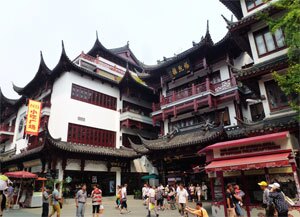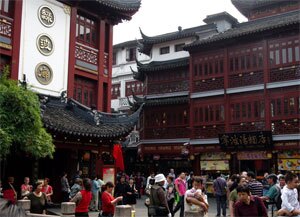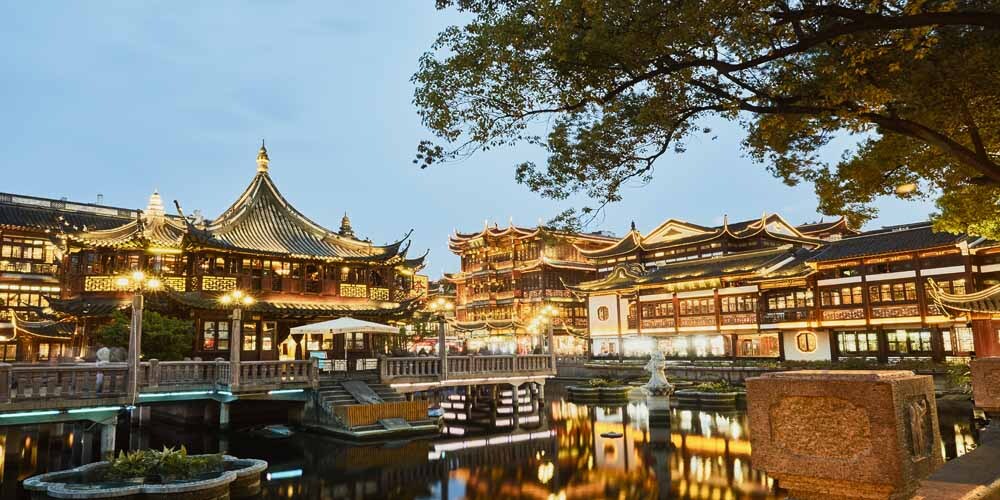Shanghai’s City God Temple in English or Shanghai Chenghuang Miao is the commonest, attractive place and shopping corner for visitors. It is a well-known Taoist temple in that area and is one of must-see attractions when visiting Shanghai.
 Regardless of size, numerous walled cities in antique China had a temple devoted to one or more immortal or god as the spirit or guard of the city.
Regardless of size, numerous walled cities in antique China had a temple devoted to one or more immortal or god as the spirit or guard of the city.
The City God Shrine in Shanghai, built as the Jinshan God Temple, devoted to the spirit of Jinshan, or "Gold Mountain", and landmass off the shore of Shanghai. It was rehabilitated to City God Temple in 1403, through the Yongle period of the Ming family.
Throughout the Qing Family, the shrine grew popular. Inhabitants of the ancient city, in addition to areas nearby, visited the holy place to pray for decent, destiny, and peace. The place of worship reached its main extent in the Daoguang period. The admiration of the holy place also extended to many trades that set up in the area, moving the near streets into a busy market.
In 1951, the Panel of Executors of this City God Temple was melted, and then the temple was handed over to the Shanghai Taoist Connotation and prepared as a Taoist point. The organization made modifications to the temple, eliminating statues signifying folk Underworld characters for example, Yama, the magistrate of the dead, and also placing an emphasis on Taoist holiness as an alternative.
During the period of China’s Culture Revolution, the shrine was shut down and used for other purposes. For several years, the major hall was used as a jewellery shop. In 1994, the temple was reinstated to its previous use as a place of worship, with local Taoist ministers. The Shrine, together with nearby Yuyuan Garden and the nearby roads are now portion of a big pedestrian zone dedicated to cafes and retail.
A whole renovation of the Urban God Temple took place between 2005 and 2006. However in October 2006 the temple was revived and reconsecrated by Taoist ecclesiastics.
 The Chenghuang temple is also called Yi temple, which is constructed with many halls such as the grand hall, middle hall, bedroom palace, star gods hall, Yama palace, Xuzhen god hall and so on. It covers an area of more than 10,000 square meters. There are two famous gardens inside the temple - West garden (Yu garden) and East garden.
The Chenghuang temple is also called Yi temple, which is constructed with many halls such as the grand hall, middle hall, bedroom palace, star gods hall, Yama palace, Xuzhen god hall and so on. It covers an area of more than 10,000 square meters. There are two famous gardens inside the temple - West garden (Yu garden) and East garden.
Shanghai Huang Miao remains as a very famous food road in Shanghai Chenghuang Temple. There are many well-known Shanghai local drinks available in Chenghuang Ancient Street, together with national and foreign tourists who favor visiting this place to gain the Shanghai food experience. The unusual dim sum in Lubolang Cafe, the Chinese vegetable cooked in Songyuelou, the Babao rice banquet in Songyuelou, and also the Nanxiang Chinese are very special, all these can be found in the ancient street.
The Chenghuang temple has a great influence on the residents of Shanghai. The religious festivals of the temple are considered to be the festivals of all Shanghai people. Especially when the Sanxun festival (a day when the chenghuang god started to inspect his people) comes, nearly all the people will come to the chenghuang temple to burn incense and worship the Chenghuang god, while all shops inside or near the chenghuang temple are decorated with red lanterns to celebrate the festival. In addition, some folk arts, like cockfighting, penmanship performance and acrobatics, are fairly attractive.

Shanghai Chenghuang Temple at Night
Location: 247 Middle Fangbang Road, Huangpu, Shanghai
Bus Routes: bus 66, 11, 23, 24, 43, 782
Open Hours: 8:30am-16:00pm
Admission Fee: RMB 5
Evaluation: A saying goes like this: one can't boast that he had been to Shanghai if he did not pay a visit to Chenghuang temple.
Surrounding: There are chenxiang pavilion of the Buddha, Xiaotaoyuan temple of the Islam, Guanyu temple of the Tai, and ruose church of the Catholicism besides the Chenghuang temple in the Yu garden area.
Recommendation Index: ☆☆☆☆